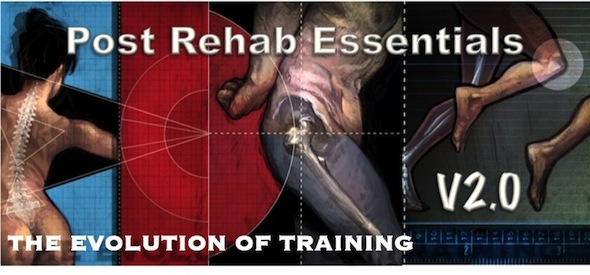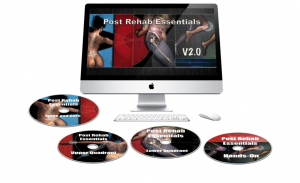 Note from MR: Dean Somerset is a guy I truly respect. Not only is he a great writer, but he knows corrective exercise as well as anyone I know.
Note from MR: Dean Somerset is a guy I truly respect. Not only is he a great writer, but he knows corrective exercise as well as anyone I know.
Dean is getting ready to launch his Post Rehab Essentials 2.0, and I thought you’d like to hear his thoughts on corrective exercise in this short piece.
(Spoiler Alert: They’re really similar to my own!)
Here’s Dean….
A few weeks ago, I had an article published on T-Nation entitled “Stop Doing Corrective Exercises.” I half-heartedly expected Mike to weigh in on the article in the LiveSpill, as he is viewed as one of the top corrective specialists in the field.
He didn’t (to the best of my knowledge), which means he either:
A) He agreed with what I said in the article, or most likely,
B) thought I was full of something less than pleasant and didn’t want to dignify it with a response.
The article was written for the average 18-35 year old fitness enthusiast, and also for those who want to chase PR’s and dominate their lifting precision.
Are You Self-Assessing via Google?
One thing I see a lot among the fitness industry is a need to self-diagnose injuries and muscle imbalances based on what everyone else says is common or regular, but at the end of the day they forget to put a hurt on themselves and get under load to see a training response.
This is a situation where the pendulum swung too far.
In the 70’s and 80’s no one looked after joint health, foam rolling, or anything related to anything other than more more more. Today we have approaches that focus more on the soft tissue work than on the actual training, so bringing it back to neutral is important.
As a trainer, I use corrective exercises as needed. I’ll repeat that last part because it’s so important.
I use corrective exercises as needed.
If I am working with an average client who may be an accountant around 40 years old and not in any specific pain, but exhibits some serious postural issues, I’ll work with them to help restore their posture by teaching them how to move, lift, and set up.
At the same time, I’ll use corrective strategies as needed to help them move better, get muscles fired up that are hesitant, and make sure they’re ready to train effectively. Many of these strategies were ones I stole directly from Mike and adapted as needed.
I then work on getting them to their goal as effectively as possible without crippling them.
For the average gym goer, if they’re having pain or problems with a movement, they should seek out a qualified professional who can help them out.
For the average trainer or rehab specialist, they should have enough tools in their tool box to assess that client or patient, develop a strategy, and put it into action for measurable returns.
I can’t tell you the number of times I’ve had a client come to me after spending months doing glute med isolation work or thousands of rotator cuff tubing drills they got from Shape magazine and still having the same troubles as when they started.
Enter Post Rehab Essentials…
They need a new plan, and that’s why I put together Post Rehab Essentials.
 It’s a video series (recently updated to version 2.0), in order to help trainers have more tools in their tool boxes to help their clients recover from injuries in a better manner without making it feel like a “rehab” program.
It’s a video series (recently updated to version 2.0), in order to help trainers have more tools in their tool boxes to help their clients recover from injuries in a better manner without making it feel like a “rehab” program.
It’s a 10-hour video presentation that covers the major anatomical structures of the body, how to assess common issues, when to refer out to qualified medical professionals, and how to design and administer an effective program with a heavy emphasis on technical execution of the movements.
Any exercise done well is typically beneficial, but any exercise done poorly is either minimally beneficial or possibly traumatic, so knowing how to make it work and what to do to fix a faulty movement is half the battle.
[Note from MR: I can’t tell you how true this statement is. Deadlifts and squats aren’t bad – giving them to the wrong people (or doing them with poor form) is what gets people into to trouble. ]
My goal is to make everyone able to train like beasts, regardless of whether they have an old nagging injury or are fresh out of surgery.
Knowing how to build a program that reduces harm while increasing the amount of training effect the person can get is the most surefire way to help people move, feel, look and perform better.
I want to help you see that, which is why I want you to get Post Rehab Essentials V.2.0.
